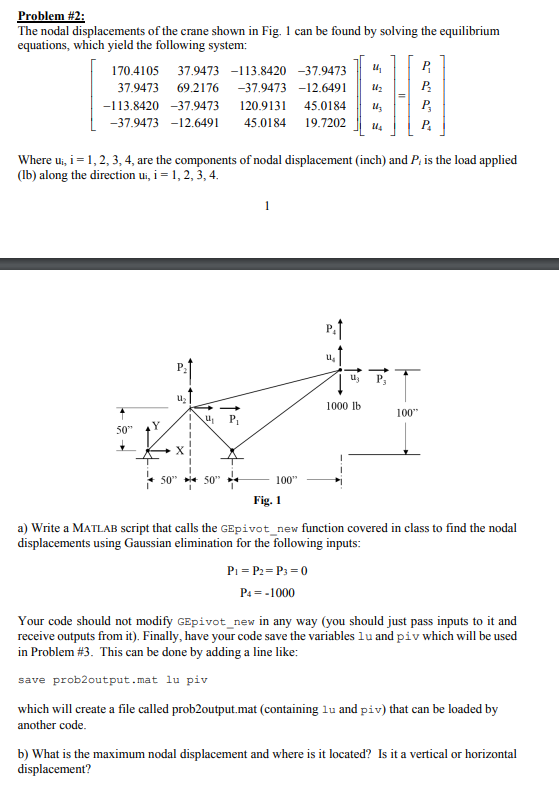Question
Function LUfac_solver.m is provided here: function [x] = LUfac_solver(LU,b,piv) % % function [x] = LUfac_solver(lu,b) % % This program employs the LU factorization to solve

Function LUfac_solver.m is provided here:
function [x] = LUfac_solver(LU,b,piv)
%
% function [x] = LUfac_solver(lu,b)
%
% This program employs the LU factorization to solve the linear system Ax=b.
%
% Input
% LU: lu matrix from GEpivot_new function
% b: right side column vector (ordered corresponding to original vector
% sent to GEpivot_new)
% piv: vector indicating the pivoting (row interchanges that took place
% during GE
%
% Output
% x: solution vector
%
% Written by Steve Margulis for CEE 103. This assumes the LU matrix is that
% provided by the GEpivot_new.m function.
% First rearrange b vector to reflect pivoting operations that occurred
% in GE pivot function
b=b(piv);
[m,n] = size(LU);
% Next construct L and U matrices from lu matrix. Note that L*U should
% equal the original matrix A with pivoting. This is why "b" is pivoted
% above to match.
U=triu(LU); % Grab upper triangular part of LU matrix
% Grab lower triangular part of LU matrix
%--Note need to replace diag. with ones
L=tril(LU);
for i=1:n
L(i,i)=1;
end
% STEP 1:
% Solve the lower triangular system using L
z=zeros(n,1);
z(1)=b(1)/L(1,1);
for i=2:1:n % Note implied matrix summation in L*z term below
z(i)=(b(i)-L(i,1:i-1)*z(1:i-1))/L(i,i);
end
% STEP 2:
% Solve the upper triangular system using U
x = zeros(n,1);
x(n) = z(n)/U(n,n);
for i = n-1:-1:1 % Note implied matrix summation in U*x term below
x(i)=(z(i)-U(i,i+1:n)*x(i+1:n))/U(i,i);
end
Problem #2 provided for reference:

Step by Step Solution
There are 3 Steps involved in it
Step: 1

Get Instant Access to Expert-Tailored Solutions
See step-by-step solutions with expert insights and AI powered tools for academic success
Step: 2

Step: 3

Ace Your Homework with AI
Get the answers you need in no time with our AI-driven, step-by-step assistance
Get Started


